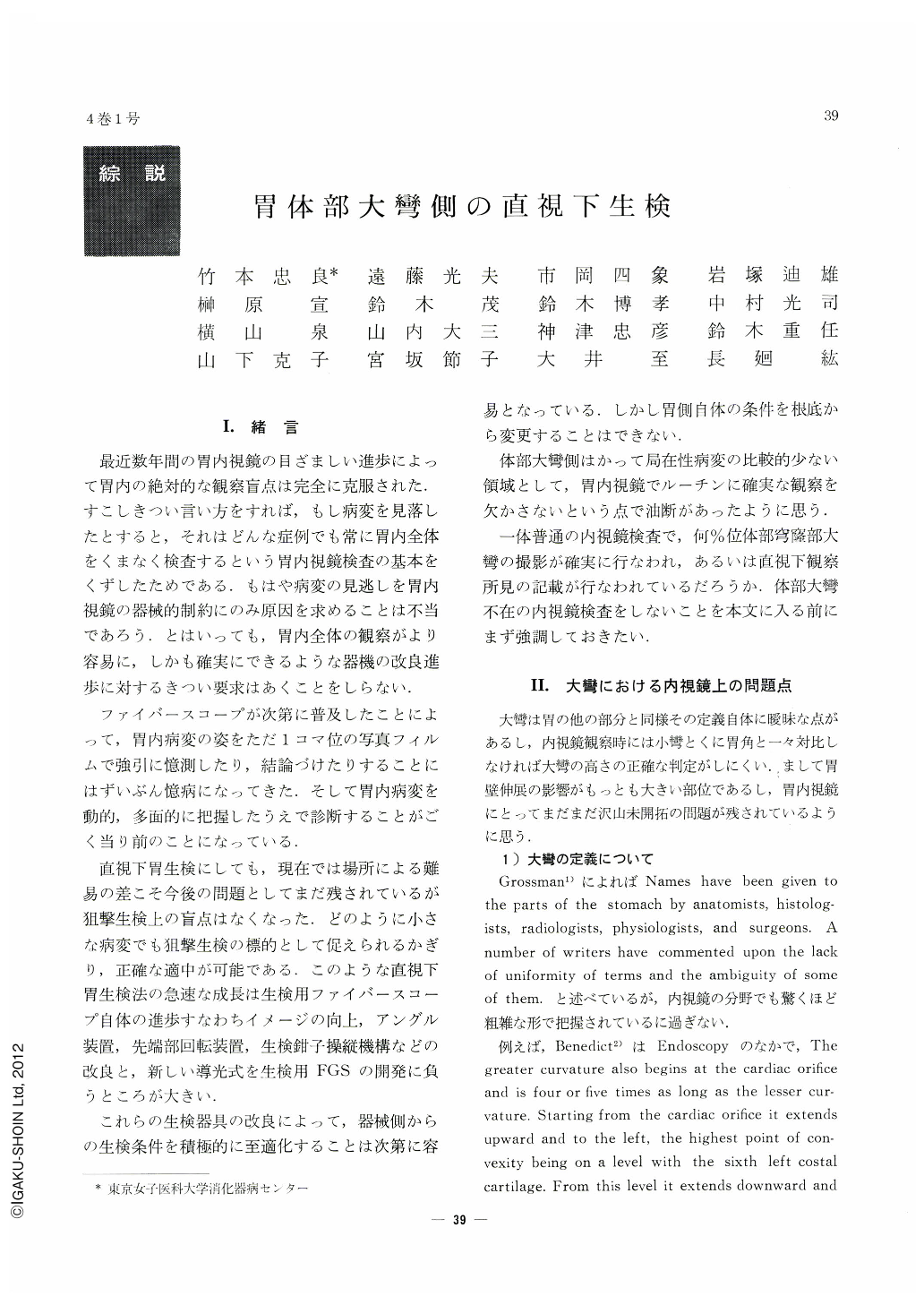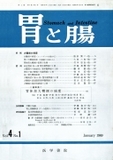Japanese
English
- 有料閲覧
- Abstract 文献概要
- 1ページ目 Look Inside
Ⅰ.緒言
最近数年間の胃内視鏡の目ざましい進歩によって胃内の絶対的な観察盲点は完全に克服された.すこしきつい言い方をすれば,もし病変を見落したとすると,それはどんな症例でも常に胃内全体をくまなく検査するという胃内視鏡検査の基本をくずしたためである.もはや病変の見逃しを胃内視鏡の器械的制約にのみ原因を求めることは不当であろう.とはいっても,胃内全体の観察がより容易に,しかも確実にできるような器機の改良進歩に対するきつい要求はあくことをしらない.
ファイバースコープが次第に普及したことによって,胃内病変の姿をただ1コマ位の写真フィルムで強引に憶測したり,結論づけたりすることにはずいぶん憶病になってきた.そして胃内病変を動的,多面的に把握したうえで診断することがごく当り前のことになっている.
There is as yet no endoscopic criteria for the conception of the greater curvature of the body as to whether it should be considered as a line or as a plane. Needless to say, there is no manifest borderline between the anterior and the posterior walls of the stomach in endoscopic observation. A line is drawn just for convenience' sake, and the greater curvature, considered as a line, is purely hypothetic, and is subject to change according to the amount of air within the stomach. The greater curve, therefore, has better be considered as a plane because it has practical advantage.
Difiiculty arises when a lesion is found in the greater curvature, as it is hard to determine its height endoscopically on account of the lack of characteristic features in that region. Often it is determined by observing the opposite curvature.
As for the biopsy of the greater curve, U-shape bending of the shaft of the scope is necessary to observe region from the cardia up to the proximal part of the fornix. The authors call this maneuver as “retrospection” or “reversion”. From the distal fornix down to the upper part of the body, scope must be placed so as to face the greater curvature with its tip bent upward, or “up” in short. From middle to lower part of the body down, the tip of the scope has to be bent downward, or, “down”, facing either the lesser or the opposite curvature. Upward bending of the endoscope is best suited for covering wide range, while downward bending thereof is advisable for closer approach to small lesion.
Although the greater curvature is said to be less vulnerable than any other part of the stomach, endoscopic observation alone is sometimes insuflicient for differentiation between scirrhous infiltration and giant rugae, or for determining the nature of ulcer found therein. Biopsy is on all accounts indispensable. It is also essential to the determination of the extent of chronic gastritis, and it should be performed on all sides of the stomach, including the greater curvature. Recently the authors have proposed “one dozen biopsy” for the evaluation of gastritis, with biopsy of the greater curve included.
Several cases are further presented in this paper of lesions found in the greater curvature.

Copyright © 1969, Igaku-Shoin Ltd. All rights reserved.


